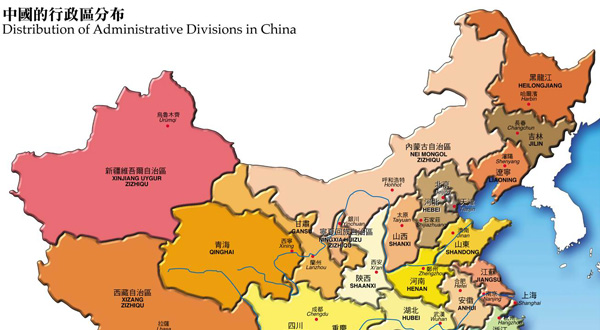Now - 22:35:45
The Russo-Turkish war of 1768-74 years.
The Russian-Turkish war of 1768-74 was the fifth military conflict between Russia and the Ottoman Empire.
The Main contradiction remains the same – the possession of a free access to the Black sea. And formal causes of the Russo-Turkish war: Russian authorities headed by Catherine II began to actively interfere in the political Affairs of Poland, where at that time there was a war of opposition among the bar Confederation and the ruling of king Stanislaw Poniatowski. Russian troops fought on the side of the king.
Pursuing the opposition forces, the Russian Cossacks invaded the Turkish lands and took the small town of Balta. The Turkish authorities, an Alliance with the Polish confederates and enlisted the support of Austria and France, declared war on Russia on 25 September 1768. So officially began the Russian-Turkish war of 1768-74.
In this war, Turkey aims to expand ownership, capturing Kiev, Astrakhan and Azov sea; France and Austria hoped to weaken the influence of Russia and to restore the former borders of Poland and the Polish confederates hoped to finally seize power in the country.
Until the end of 1768, the parties did not engage in active hostilities, but only concentrating their forces and preparing for war. The army led by General Golitsyn slowly advanced, occupying the area around the Dniester river, towards the fortress of Khotyn. And the second Russian army, commanded by General Rumyantsev, was to defend the territory of Ukraine from the Crimean-Turkish raids.
The Fighting began in the winter of 1769, when the cavalry of the Khan of Crimea Giray invaded Ukrainian land. As expected, this attack was repelled by the army Rumyantsev. At the same time, Russian troops occupied Taganrog, cleared the access to the Azov sea and began the creation of the Azov flotilla.
Recommended
"Knowledge is light and ignorance is darkness": the value, meaning and alternatives
There are some sayings that would seem to need no explanation, such as “teaching & ndash; light and ignorance – darkness”. But some still do not understand their meaning. But not only for such people is written by our article. I...
What was invented by Mendeleev for the army. The history and fate of the invention
D. I. Mendeleev was a brilliant Russian scientist-polymath, who made many important discoveries in various fields of science and technology. Many people know that he is the author of “Fundamentals of chemistry" and the periodic law of chem...
The origin of the Slavs. The influence of different cultures
Slavs (under this name), according to some researchers, appeared in the story only in 6 century ad. However, the language of nationality bears the archaic features of the Indo-European community. This, in turn, suggests that the origin of the Slavs h...
The Russian-Turkish war of 1768-74 years was significant because during it the troops of the Ottoman Empire failed to win a single any fall victory. Their most crushing defeat of the Turkish army suffered in the battle of Chesma and the battle of Kagul.
The Chesma battle took place at the end of June, 1770, when a Russian squadron commanded by Admiral Spiridov and Greig, the result of the brilliant operations were able to lock in the Bay near Chesma enemy ships and completely destroying the Turkish fleet. The result of this battle, it rubs the Turks amounted to 10 thousand, and Russian – only 11 people.
And in the land battle 21 Jul 1770 in Cahul distinguished future feldmarshal Rumyantsev. Its 17-thousand army managed to win over 100-strong army of Khalil Pasha. It happened thanks to a brilliant offensive tactic used by Rumyantsev. At some point, when the Turkish troops violently oppressed Russian troops, Rumiantsev threw himself into the battle and deployed to attack his soldiers, which had begun to retreat. Janissaries, after the first attack failed, began to lose ground and flee.
At the end of the battle from the Russian side was lost fifteen hundred people, and from the Turks – more than 20 thousand. After the greatest victory of Cahul surrendered to the Turkish fortress of Izmail and Kilia.
From 1770 to 1774 the Ottoman Empire intensified the crisis. In the Caucasus and the black sea region were active hostilities, in which victory over and over again was won by the Russian troops. The promised aid from Poland, Austria and France, the Turks practically did not receive. Therefore, in 1772, the Turkish government decided to start peace talks. The main point on which the parties do not agree – was the fate of Crimea. The Russian side insisted on the independence of Crimea, and the Turks strongly refused this. So, never come together in the General opinion, the parties resumed hostilities.
In the years 1773-74, Russian troops were able to occupy the Crimean Peninsula. Especially notable was the army under the command of Suvorov, who won a brilliant victory under Girsova, Kozluca and Turtukay.
In Georgia at that time also were fighting with the Turks, though not as successful as in Moldova and the Crimean steppes. In 1771 Catherine II ordered to withdraw Russian troops from Georgia, as their stay there found it useless further. However, events in the Caucasus, distracting forces of the Turks from the Central theater of war, which also had a positive impact on the course of the war.
Finally, the Turkish authorities were forced to sign a peace Treaty and fulfill all the conditions put forward by Russia. Thus ended the Russo-Turkish war of 1768-74 years. It happened in a small Bulgarian town of Kucuk-Kaynarca in July 1774.
The Results of the Russo-Turkish war: Russian Empire received the territory between the Dnieper and the bug, including the sea coast and the Crimean fortress. The Crimean khanate was declared an independent state, and Russian merchant fleet received the right of free passage through the Straits. Thus, Russia was able to fulfil its plan to the maximum set out in the Russo-Turkish war.
Article in other languages:
AR: https://tostpost.com/ar/cars/7586-what-is-the-exam-in-the-traffic-police.html
BE: https://tostpost.com/be/a-tamab-l/13550-shto-zh-uya-lyae-saboy-ekzamen-u-d-bdr.html
DE: https://tostpost.com/de/autos/13553-was-ist-eine-pr-fung-in-der-verkehrspolizei.html
ES: https://tostpost.com/es/coches/13560-que-es-un-examen-en-el-gbdd.html
HI: https://tostpost.com/hi/cars/7592-what-is-the-exam-in-the-traffic-police.html
JA: https://tostpost.com/ja/cars/7588-what-is-the-exam-in-the-traffic-police.html
KK: https://tostpost.com/kk/avtomobil-der/13553-b-l-b-ld-red-emtihan-gibdd.html
PL: https://tostpost.com/pl/samochody/13540-co-to-jest-egzamin-do-policji.html
PT: https://tostpost.com/pt/carros/13534-o-que-um-exame-de-pol-cia-de-tr-nsito.html
TR: https://tostpost.com/tr/arabalar/13556-nedir-bu-s-nav-traf-k-polisi.html
UK: https://tostpost.com/uk/avtomob-l/13550-scho-zh-yavlya-soboyu-spit-v-gibdd.html
ZH: https://tostpost.com/zh/cars/8252-what-is-the-exam-in-the-traffic-police.html

Alin Trodden - author of the article, editor
"Hi, I'm Alin Trodden. I write texts, read books, and look for impressions. And I'm not bad at telling you about it. I am always happy to participate in interesting projects."
Related News
Gross profit is the main economic indicator
Every company in the market sees its main objective making a profit. It is necessary to meet both its own and the needs of employees and also for further development of production. Making any transaction, each entrepreneur c...
The first jet train in the Soviet Union: history, characteristics, photos
In the early 70-ies to employees of all-Union scientific-research Institute of car building (VNIIP) and Yakovlev design Bureau was tasked with creating a domestic trains, capable of speeds of 200 km/h. However, before proceeding t...
Essay on the painting "the Lacemaker" Tropinin
this material is devoted to a description of the painting "lace" Tropinin. Though this work is not world famous, but it has important features, which further will be discussed.a short biography of the artistVasily Andree...
Domestic policy of Alexander 3
From the first days of the Board's internal and external policies of Alexander 3 was aimed at the revision of the main undertakings of Alexander 2. And the main engine of this policy was the D. A. Tolstoy, when some liberal ...
Cell wall and its role in the life of a plant cell
the Cell wall is a hard and thick shell that is located over the cytoplasmic membrane. This element is characteristic of cells of bacteria, fungi and plants. In addition to protecting cells, hard shell performs a number of other i...
The formula and methods for determining the needs of the enterprise in circulating assets
Every company strives to increase the efficiency of use of its capital. Depends on the profitability of the organization, its market value and the stable development in the future. For this reason, the relevant services of each co...






















Comments (0)
This article has no comment, be the first!